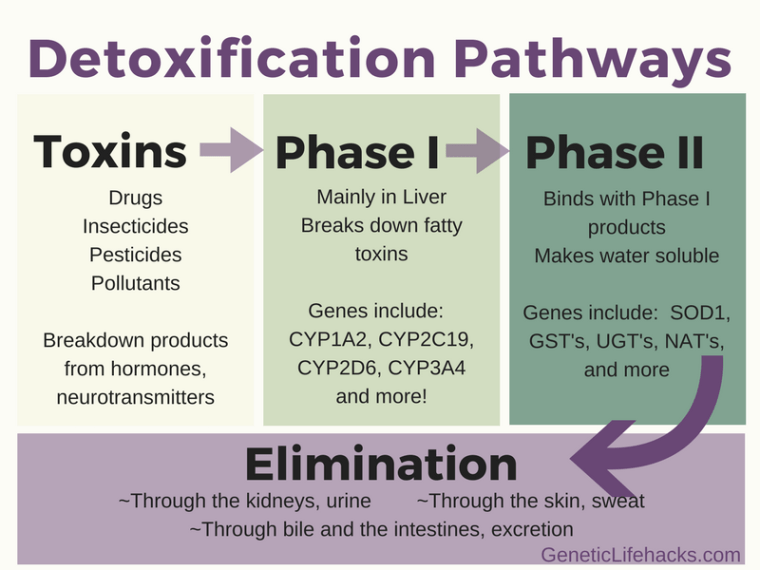Phase 3 Detoxification
Phase 3 Detox
Detoxification has become a very popular topic these days as the level of toxicity that we are exposed to daily increases exponentially. Our toxic environment is proportional to the increasing necessity for a highly functioning detoxification system in our bodies. This need for detoxification is paralleled by decreased levels of the essential vitamins, minerals, and co-factors needed for the different phases of detoxification in our natural environment and our diets as well as the toxins themselves blocking these pathways from functioning optimally. There are also many epi-genetic factors such as immune imbalance, emotional stress, nutrition, microbes and parasites, exercise, hygiene, sleep, etc. that prevent our detoxification pathways from functioning.
Detoxification is the metabolic process by which the toxic qualities of a poison, toxin, or xenobiotic (chemical substance not naturally found in the body) are reduced by and excreted from the body. The system is called the detoxification or biotransformation system and is divided into 3 phases- modification, conjugation, and excretion. Phase I entails conversion of the lipid-soluble toxin into a water-soluble, yet even more toxic, molecule. Phase II, conjugation, binds or connects this toxin to another molecule that is water-soluble thus making it excretable from the body. Phase III, excretion, a lesser-studied aspect of this pathway, removes this now water-soluble molecule from the cells and the body.
Phase I and II convert the toxin into a molecule that can be removed from the body, and phase III is imperative for its removal from the body. Phase III transporters are present in many tissues including the liver, kidneys, intestine, and brain. The transporters act as a barrier for the entry of xenobiotics as well as a mechanism for moving them and endobiotics (enzymes involved in normal endogenous body metabolism) in and out of the cells.
The transporters in Phase III belong to a family of proteins called the ABC transporters, or ATP-binding cassette, as they require ATP, or energy, to pump toxins through the cell membrane and out of the cell. In the liver, they move glutathione, sulfate and glucuronide conjugates out of cells and into the bile for elimination. In the kidney they can remove xenobiotics from the blood so that they can be excreted from the body. Phase III transporters also decrease the effectiveness of pharmaceutical therapies as they increase their clearance from the body. This is an important note for chemotherapy drugs, as the transporters enable cancer cells to become resistant and thus their stimulation is not desirable.
Phase III can be supported by different methods. Dietary factors such as adequate fiber to support healthy excretion to provide a route for the removal of toxins, as well as adequate water to maintain healthy kidney function and urinary excretion allow for the body to properly remove toxins and waste products. Sweating, in a sauna or through exercise, also helps to remove toxins through the skin. Dietary factors that stimulate the activity of phase III proteins are apple polyphenols and sulforaphane (found in broccoli). In order to In order to increase the amount of energy available to support the function of the phase III transporters, mitochondrial support and different energy producing elements can be incorporated such as thiamin, riboflavin, niacin, pantothenic acid, magnesium, and CoQ10. Also, encouraging drainage of the cells through homeopathic cellular drainage facilitates phase III is on an energetic level.
Overall, detoxification has become an imperative aspect of our lives as the earth has an ever-increasing toxic burden. All phases of the biotransformation pathway are crucial, however Phase III allows our bodies to get rid of the toxins and is an under-utilized aspect of the detoxification pathway.
